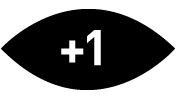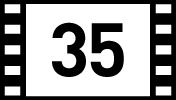

One of the best and most original films of 1989 is Gus Van Sant’s second feature Drugstore Cowboy. This story, about a group of young junkies who roam around the Pacific Northwest getting high off the prescription medications they rob from local pharmacies, was one of the first movies to honestly and sympathetically depict the struggles of drug addicts in a way that neither glamorized nor trivialized their harsh and desperate existence. In the grand tradition of Bonnie and Clyde this picture depicts outlaw heroes, young people who didn’t set out to become criminals but found they fit into a life outside the law far more comfortably then within its bounds.
Matt Dillon stars as Bob, the leader of this gang of four, which includes his high school girlfriend/now wife Dianne (Kelly Lynch), his goofy wingman Rick (James Le Gros), and Rick’s teenage runaway girlfriend Nadine (Heather Graham). Together they act as a surrogate family for each other, and we come to care deeply about them. They are not presented as heroic, nor as “bad kids,” but far more in line with how addicts have come to be viewed thirty years later – as people struggling with a disease. How that disease affects the lives of each individual in the foursome provides Van Sant and Daniel Yost’s excellent screenplay with its narrative drive.
Based on the autobiographical novel by James Fogle, every aspect of Drugstore Cowboy has the ring of truth, utilizing fascinating small details to provide insight into the actions, feelings, and background of each character.
All four leads give career-best performances here. Interestingly, while each has an impressive roster of films and roles under their belt, and are all still working three decades later, they are all actors of limited range who rarely succeeded when they tried to stretch much beyond their screen personas. Yet the authenticity and vulnerability of each performance in this picture are as impressive as Van Sant’s stylish but unobtrusive direction. For a story about the cyclical monotony of the junkie lifestyle, the movie never becomes repetitive, depressing, or listless. Amazing supporting work from James Remar, Grace Zabriskie, and, most notably, William S. Burroughs, helps provide a consistent refreshing of the narrative by making each character encounter distinctive.
The tone Van Sant is able to capture in this modest independent production sets Drugstore Cowboy above and apart from the myriad “drug movies” that came before and after it. This is a bleak picture about people who are suffering great pain most of the time, yet watching Drugstore Cowboy is an exhilarating, sometimes even joyous experience. From Dillon’s deadpan voiceover that accompanies the thick blue on black opening titles, to the floating imagery used where all other drug movies attempt to cinematically represent the experience of being high, to the unusual turn the story makes when Burroughs shows up, to the iconic closing credit sequence of home movies the gang shot on Super 8 film set to the odd, spare, somber but catchy song “The Israelites” by Desmond Dekker & The Aces, we can’t help but get swept up by the level of craft on display across all departments and every aspect of this one-of-a-kind picture.
Twitter Capsule:








